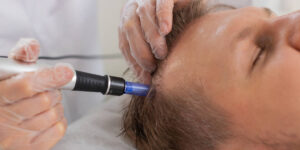While you embrace ageing and the positives of different life stages, it’s difficult to love physiological and aesthetic changes which result in you feeling less vital and looking a (still lovely yet) tired version of yourself. Fortunately, advances in ‘regenerative medicine’ now enable medics to rewind the clock somewhat, repairing, restoring and regenerating tissue – and these exciting developments are a natural evolution in aesthetic treatments too.
How do regenerative treatments work?
When threatened by disease or injury, your body automatically responds by seeking to repair the damaged tissue on a cellular level. Such is our cellular intelligence, stem cells read surroundings and decide if action is required and, in youth, our army of cells is very effective at kicking into gear. However, as you age, your cellular communication deteriorates and regeneration slows. This is where developments in regenerative medicine come in, to re-invigorate ailing cells.
What is regenerative medicine?
Regenerative medicine is a branch of medical science that focuses on repairing, replacing or regenerating damaged or diseased tissues and organs. It uses techniques such as stem cell therapy, tissue engineering and gene therapy to stimulate the body’s natural healing processes and promote tissue growth, offering hope for a wide range of conditions, from organ damage to degenerative diseases. Regenerative medicine is an established medical field, with millions of treatments having been carried out over decades, from stem cells regenerating heart tissue to helping recuperate patients with COVID-19.
How does regenerative medicine differ from traditional medical approaches?
The regenerative treatment approach seeks to replace or regenerate cells damaged by disease, trauma, environmental or lifestyle factors. This is in contrast to the traditional medical approach which focuses on reducing the symptoms of ageing, when possible, but doesn’t encourage the body to recuperate itself nor work more effectively in future.
What is regenerative aesthetics?
Regenerative aesthetics is an off-shoot of regenerative medicine so likewise seeks to harness and enhance your body’s innate system for natural repair and healing, for example with facial ageing. Intrinsic ageing takes it toll on the body, as cells weaken in their ability to automatically restore impaired tissue, and regenerative treatments offer natural interventions which stimulate cell to cell communication to trigger rejuvenation and repair.
Which age-related changes may regenerative aesthetic treatments help?
At around age 35, the effects of ageing start to become more pronounced, starting with skin changes. From your mid-30s onwards, skin begin to lose its integrity and facial structure changes, including:
- Collagen, fibrin and hyaluronic acid decline
- Subcutaneous fat & deeper fat stores change
- Bone regression
This leads to:
- Loss of support for the overlying skin
- Volumetric changes
- Retreating and pulling muscles
Using the power of cellular intelligence, we can actually revert the intracellular matrix to a younger state, by triggering the regeneration of the affected tissue and bringing back more structure and youthfulness to the face. In so doing,
- Volume changes can be improved
- Tissue position can be enhanced
- Skin laxity, radiance & quality can be restored
What treatments are available in the field of regenerative aesthetics?
You’ll already be familiar with several regenerative aesthetic treatment offerings, including PRP (platelet-rich plasma), PRF (platelet-rich fibrin), polynucleotides, Radiesse dermal filler and growth-factor-based skincare. Other treatments are also in development.
Would you have other treatments with regenerative aesthetics?
As always, your own unique physiology, medical history, skin condition, genetics and lifestyle will dictate which treatments are appropriate for you, if any. Often a combination approach is beneficial for patients, with one or more regenerative aesthetic treatment complimented by other bio-stimulating treatments such as microneedling.






